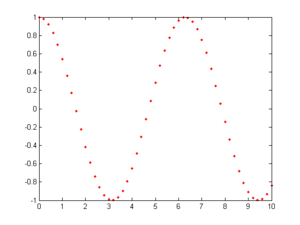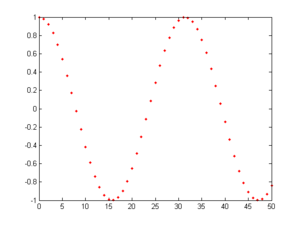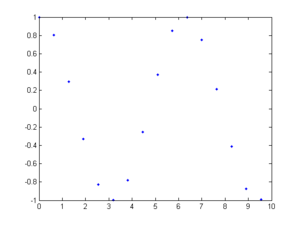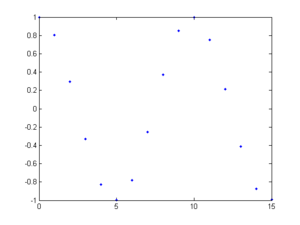(fixed image alignment, added captions) |
(Added explanation) |
||
| Line 38: | Line 38: | ||
[[Image:hw2_1_A3_ECE301Fall2008mboutin.png|thumb|left|300x300px|cos(t) shown sampled at pi/2 per unit]] | [[Image:hw2_1_A3_ECE301Fall2008mboutin.png|thumb|left|300x300px|cos(t) shown sampled at pi/2 per unit]] | ||
[[Image:hw2_1_A4_ECE301Fall2008mboutin.png|thumb|right|300x300px|The sampling shown based on index]] | [[Image:hw2_1_A4_ECE301Fall2008mboutin.png|thumb|right|300x300px|The sampling shown based on index]] | ||
| + | |||
| + | |||
| + | |||
| + | |||
| + | |||
| + | |||
| + | |||
| + | |||
| + | |||
| + | |||
| + | |||
| + | |||
| + | |||
| + | |||
| + | |||
| + | |||
| + | |||
| + | |||
| + | |||
| + | |||
| + | |||
| + | |||
| + | Notice that the first image of values (from the first sampling) are not periodic. There is no integer 'N' such that sampling(n) = sampling(n+N). | ||
| + | However, in the second case, this does occur. One may observe that sampling(n) = sampling(n+10). Thus, the second case is periodic. | ||
Revision as of 10:05, 9 September 2008
The function I chose (at random) from homework1 can be found here.
The function x(t) = cos(t) is periodic in CT, as its period is 2$ \pi $. However, it is not periodic in DT.
Here is the function sampled at a frequency of 5 samples/unit:
Here is the function sampled at $ {\pi \over 2} $ (as closely as MATLAB is able to approximate pi)
Notice that the first image of values (from the first sampling) are not periodic. There is no integer 'N' such that sampling(n) = sampling(n+N).
However, in the second case, this does occur. One may observe that sampling(n) = sampling(n+10). Thus, the second case is periodic.





